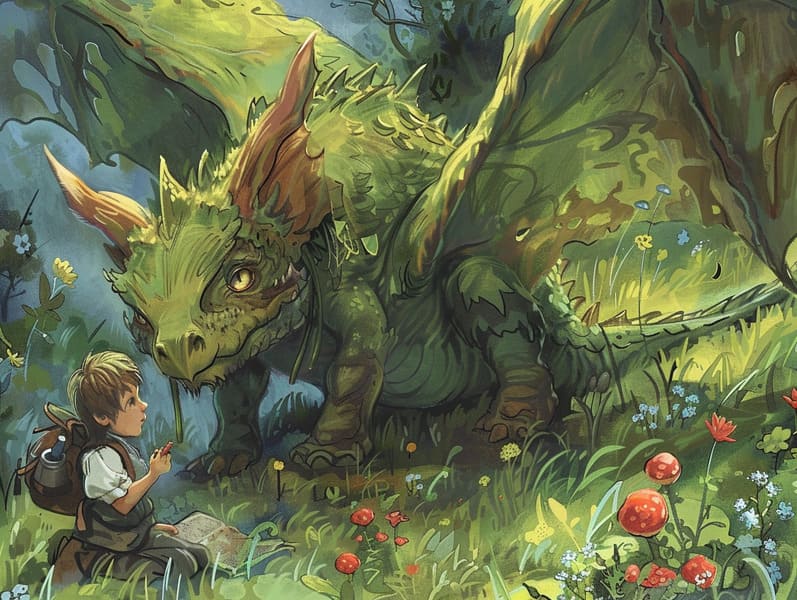The Creation of Mythical Fairy Tales with Its Perpetual Grandeur.
The Creation of Mythical Fairy Tales with Its Perpetual Grandeur.
Blog Article

Old fairy tales have deep roots. These narratives have been recounted from one generation to the next long before they were ever recorded. They sprang from a variety of civilizations, including American traditions. They were initially conveyed among mature audiences, often carrying themes and messages mirroring the societal norms and beliefs of the time.
Jacob and Wilhelm Grimm, Jacob and Wilhelm, were among the first to compile and release many of these beloved stories. Their anthology, "Grimm's Folk Tales," included narratives like "The True Bride," "The Bread Crumb Trail," and "Snow-White and Rose-Red," which have since become cornerstones in the world of children's fairy tales. Similarly, Hans Andersen's fantastical stories, such as "The Story of the Little Mermaid," and "The Duckling's Story," have enchanted hearts worldwide, cementing their place in the pantheon of famous fairy tales.
Even though they are old, fairy tales remain as relevant as ever, especially as kids' bedtime tales. These fantastical tales are now available in numerous formats, including gorgeously illustrated books, captivating animations, and online storybooks.
Their continued relevance can be attributed to several captivating elements:
Crucial Morals: Classic fairy tales often impart important moral lessons. Narratives like "The Tale of the Boy Who Cried Wolf" teach the merit of truth, while "The Hare and the Tortoise" stress the benefits of resolve and humbleness. These stories offer children clear distinctions between good and bad, helping to shape their moral compass in a tender yet impactful way.
Warmth and Understanding: Traditional fairy tales frequently showcase protagonists facing difficulties and adversities, encouraging readers to connect with their struggles and champion their triumphs. For instance, "Beauty's Beast" illustrates the benefit of valuing inner qualities to know the real person of a character, strengthening tenderness and comprehension.
Cultural Perception: Many classic fairy tales are steeped in the cultural contexts from which they emerged. Immersing in these tales can provide captivating looks into different traditions, enhancing a sense of global respect and discernment.
Inventiveness and Fantasy: The enchanted elements in old fairy tales—enchanted forests—invigorate children’s innovative ideas. These fairy tales move readers to supernatural realms, awakening innovative ideas and a sense of fascination that endures a lifetime.
Traditional fairy tales are not only delightful but also illuminating. They serve as alluring tools in developing various mental and emotional abilities in young ones. When traditional fairy tales are told out loud, they improve language skills by introducing new word meanings and detailed sentence structures. This practice also cultivates auditory perception and concentration, as young ones track the narrative, keen to see what happens next.
Furthermore, reflecting on the themes and characters of old fairy tales can improve analytical skills and cognitive skills. Children are educated to discover patterns, foresee events, and get cause and effect. These discussions also assist young readers voice their thoughts and feelings, adding to their emotional intelligence.
In today’s modern era, the availability of digital fairy tales has made these stories more within reach than ever. Internet sites and web apps offer large libraries find it here of traditional fairy tales that can be viewed or listened to anytime, anywhere. Fairy tales recited are particularly common, making available an interactive method for young ones to experience these captivating stories. Read-aloud stories and read-aloud videos bring characters and settings to life, often accompanied by enchanting music and instrumentals that improve the narrative experience.
The timeless appeal of traditional fairy tales lies in their ability to shift to the present while keeping their underlying messages. Contemporary modernizations of these tales often feature more diverse protagonists and modern settings, making them meaningful to today’s audience. However, the essential messages of boldness, generosity, and rightness remain unchanged, continuing to influence audiences of all ages.
Fairy tales also offer a sense of serenity and homeliness. They grant a structured narrative with a clear beginning, middle, and end, often wrapping up with the culmination of conflicts and the triumph of virtue over corruption. This steadiness can be heartening for children, presenting a sense of stability in an shifting world.
Traditional fairy tales continue to enchant and coach new generations, maintaining their attraction and significance in modern society. As nighttime stories for kids, they impart upon a perfect blend of allure and teaching, facilitating moral values, empathy, and creativity. The presence of digital fairy tales and the well-liked nature of fairy tales spoken ratify that these old fairy tales remain acquirable to new generations.
By holding onto and divulging these fairy tales, we continue to laud the rich tapestry of tradition and cultural heritage. Whether you are seeing a colorful picture book, enjoying a electronic collection, or listening to an narrated book, the wonder of traditional fairy tales is always within reach. These narratives teach us of the perpetual spell of tales and its ability to bind us across centuries and lands.
No matter if you are accessing a gorgeously illustrated book, enjoying a cyber collection, or listening on an audiobook, the allure of old fairy tales is always within reach.
These tales point out of the lasting magic of tales and its ability to hold us together across generations and cultures, weaving a spell that delights and instructs alike.